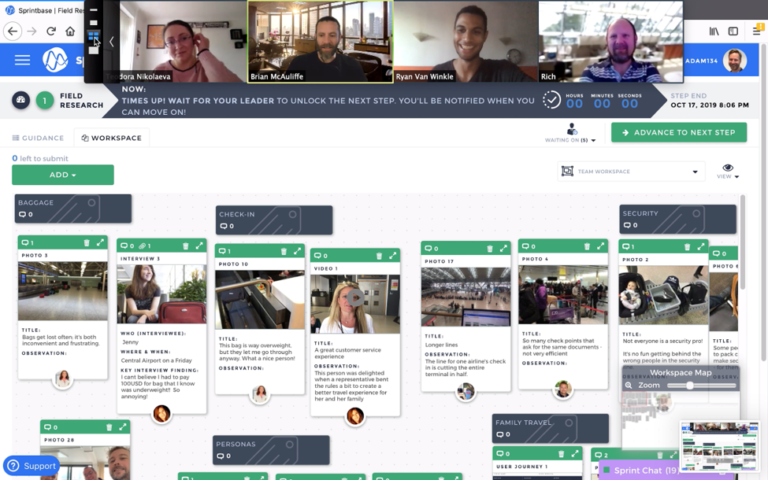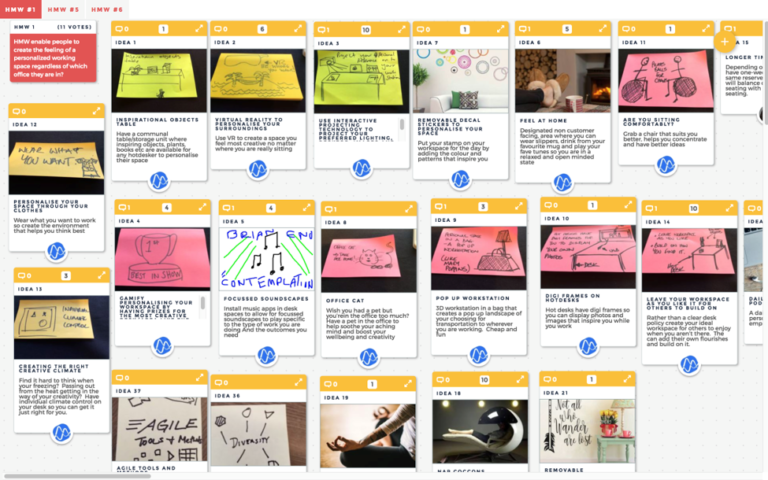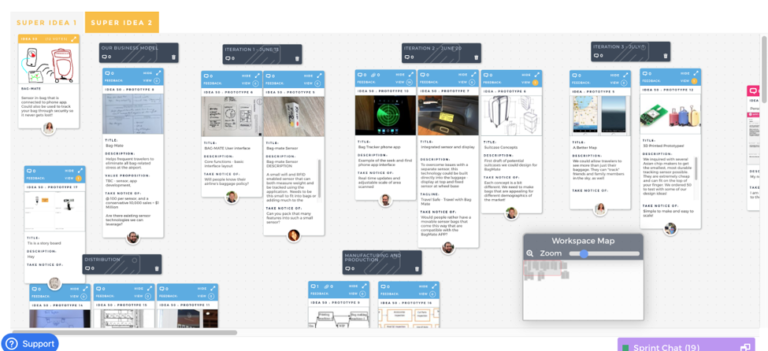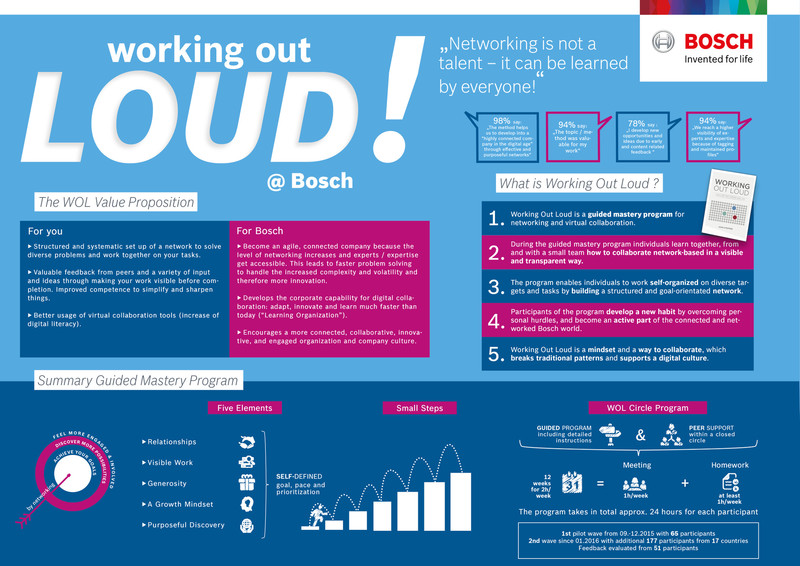e-Learning Ecologies MOOC’s Updates
Potential of collective intelligence in economy
In course module 3, we learned about the high potential of collective intelligence in the learning environment. In my role as learning expert in an economic organization, I am especially interested in the potential of a learning environment that enhances collective intelligence. I would like to introduce some practical examples and discuss how they shape a collective intelligent learning environment and make learning within the company more social and more effective than ever before.
The first example that I would like to introduce in this context is design thinking. Research shows (McKinsey & Company, 2018) that organizations that have adopted this innovative approach based on customer-centricity, problem-solving and user testing, are significantly outperforming. Design thinking is seen as a cultural change across organizational disciplines including product development and HR development. (Weinberg, U., 2017)
"The mindset of most people is still in a kind of 20th century competitive mode. Design thinking can help them to think differently"
- Ulrich Weinberg, Hasso-Plattner Institute Potsdam
In an interview, Weinberg describes why we believes design thinking is very important for companies in the digital age:
Traditionally, design thinking workshops are being organized physically. However, with digital ecologies arising and working conditions changing (e.g. remote working, global teams), virtual design thinking workshops are becoming increasingly popular where team members communicate via video conferencing and access work of the whole team through shared online work spaces. (Innovation Training, 2019)
In my organization, design thinking teams are staffed heterogeneously. Each design thinking team has team members from different educational backgrounds, job profiles/roles and management levels (both junior and senior level) with the aim to bring in different perspectives. This staffing policy is based on the idea that if you bring workers with different knowledge backgrounds and perspectives to the same kind of problem, they are going to have a much richer learning experience and are able to produce more creative and higher quality results. From a worker’s perspective, a design thinking project can be seen as a project-based learning process in context to collective intelligence.
Moreover, design thinking workshops usually provide the opportunity for teams to give peer to peer feedback on developed ideas in order to help each team member and group to lift the level of their performance. The digital format speeds up the development process and allows all team members to communicate (e.g. chat) and produce artifacts at the same time.
As we learned in the course materials, collective intelligence environments stimulate cultural change within an organization. In the example of design thinking workshops, there is no boss, teacher or trainer who evaluates the team’s outcomes and takes decisions on how to move on. Instead, digital ecologies enable to set up systems which allow the whole team to jointly develop prototypes and to provide feedback on their outcomes and at the same time increases efficiency of the team and their learning process thanks to reduced leader or trainer capacities.
In the course’s video materials, Cope states that the real value for the organization and for team members lays in the knowledge artifacts that are being produced as evidence of practice. Based on a changing recursive feedback culture, those knowledge artifacts team members produce from the design thinking process show the real value for an organization since facts, definitions or processes can be easily looked up online.
Another example that is worth to mention in the context of collective intelligence is a trending network-based learning approach called Working out Loud.
“Working Out Loud is a way to build relationships that help you achieve a goal, develop a skill, or explore a new topic. Instead of networking to get something, you invest in relationships by making contributions over time, including your work and experiences that you make visible.”
– John Stepper
At BOSCH, for example, WOL is an established format to creative collective intelligence for both junior and senior management level. In a pre-scheduled timeframe (about 2-3 months) self-organized peer groups, so-called circles, help BOSCH employees experience the benefits for themselves.
If there is one single recommendation I could share with an HR development department In context of collective intelligence, I would strongly recommend to make investments to build environments which are deeply about collaborative intelligence and generate a social stickiness among employees in context of learning. I am excited to see how collective intelligence in context of learning will develop in economy and I am looking forward to co-shape this future. :-)
Sources:
- Innovation Training (2018), How to Run a Virtual Design Thinking Project with Remote Teams, URL: https://www.innovationtraining.org/how-to-run-a-virtual-design-thinking-project-with-remote-teams/
- Krentz, K., 2017, Working out Loud @ Bosch, URL: https://www.linkedin.com/pulse/working-out-loud-bosch-katharina-krentz/
- McKinsey & Company (2018), The business value of design, URL: https://www.mckinsey.com/business-functions/mckinsey-design/our-insights/the-business-value-of-design
- Stepper, J., URL: https://workingoutloud.com/en/about
- Weinberg, U., 2017, Experts@IoT: Ulrich Weinberg, School of Design Thinking, Universität Potsdam, URL: https://www.youtube.com/watch?v=HxlDIcKxPyU






